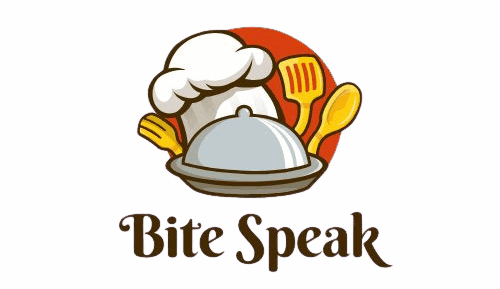15 Ways to Decorate Cakes Like an Experienced Baker
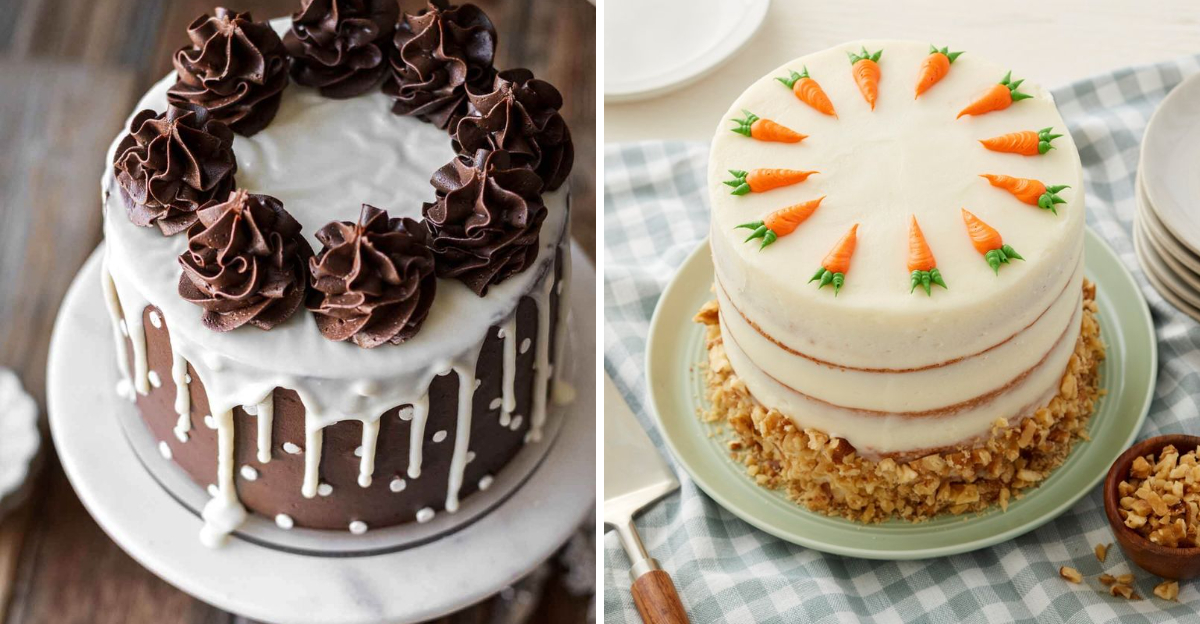
Cake decoration is an skill that allows bakers to express designs and add personal flair to their baked cakes. Whether you’re looking for traditional or unconventional methods, there are endless possibilities to explore. Here, we present 15 innovative ways to decorate cakes that range from the classic to the unexpected, offering something for every baker’s style.
1. Edible Flower Petals
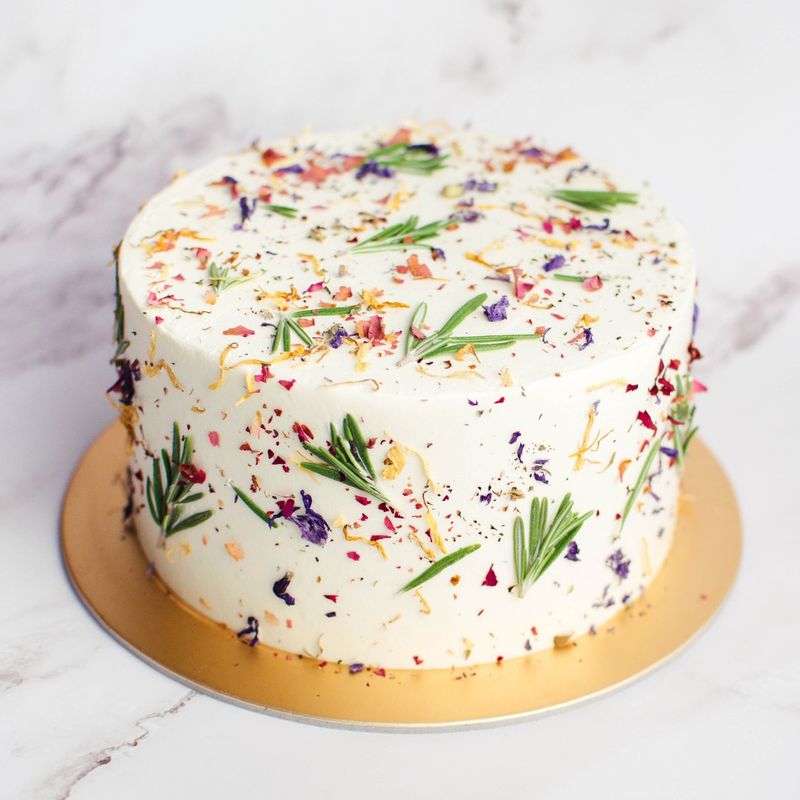
Using fresh, edible flower petals on cakes can add a beautiful touch. Gather petals from flowers like roses, violets, or marigolds. Make sure they are safe to eat and properly cleaned. Spread them across your cake’s surface for a natural look. Edible flowers can be placed in patterns or scattered randomly, depending on the design you want to achieve. They offer a burst of color and a hint of floral flavor, excellent for spring or garden-themed events. Carefully selecting flowers ensures a tasteful decoration that’s both pretty and palatable.
2. Chocolate Shards
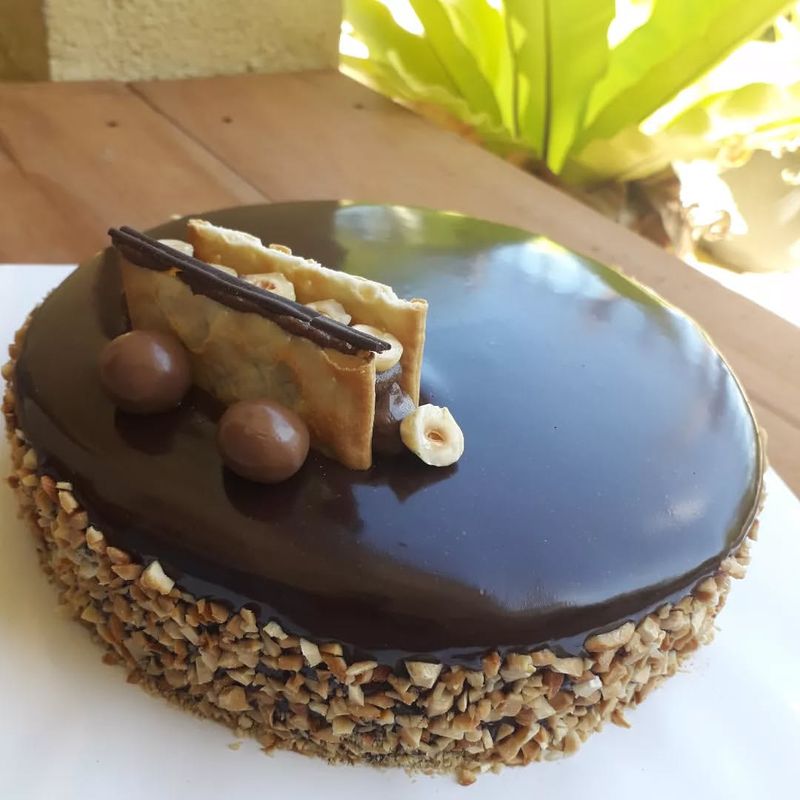
Making chocolate shards is a straightforward technique with dramatic results. Melt chocolate and spread it thinly on a baking sheet. Once it hardens, break it into pieces of varying sizes. These shards can be inserted into the cake’s top or sides, providing a bold, architectural element. For extra flair, try different types of chocolate, like dark, milk, or white. Combining these can offer a striking color contrast. Chocolate shards add not only visual interest but also a satisfying texture and rich chocolate flavor to your dessert.
3. Sugar Lace
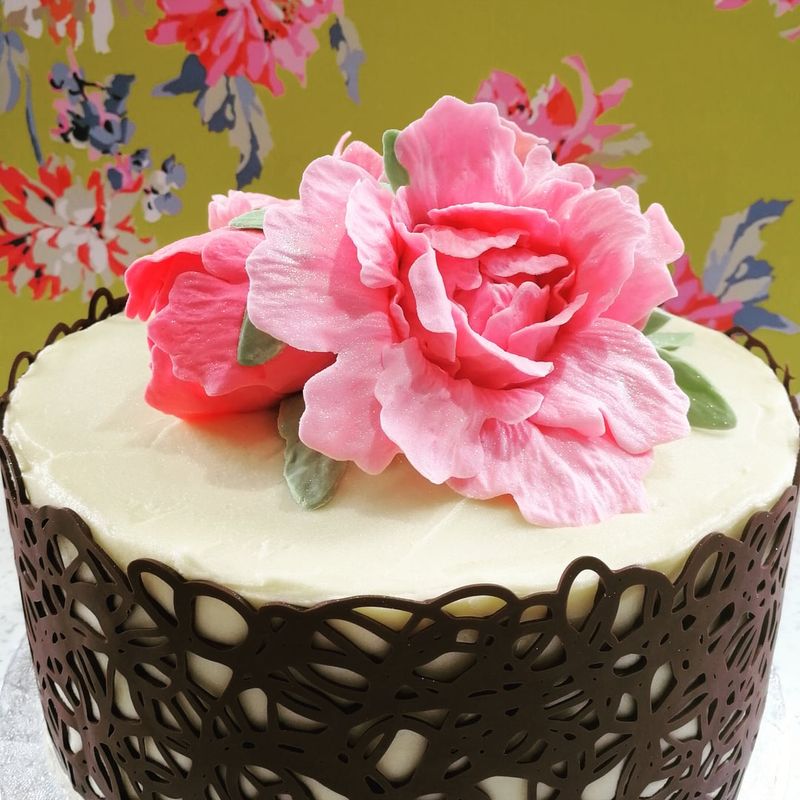
Sugar lace offers a delicate and refined look for cakes. It’s crafted from a special mixture that becomes flexible and lace-like once set. Apply it around the sides or on top to mimic elegant lace fabric. This decoration is ideal for formal events where sophistication is key. Sugar lace can be tinted in various colors to match any theme. The flexibility of sugar lace allows it to conform to the cake’s shape, enhancing its elegance without overpowering other design elements.
4. Cereal Toppings
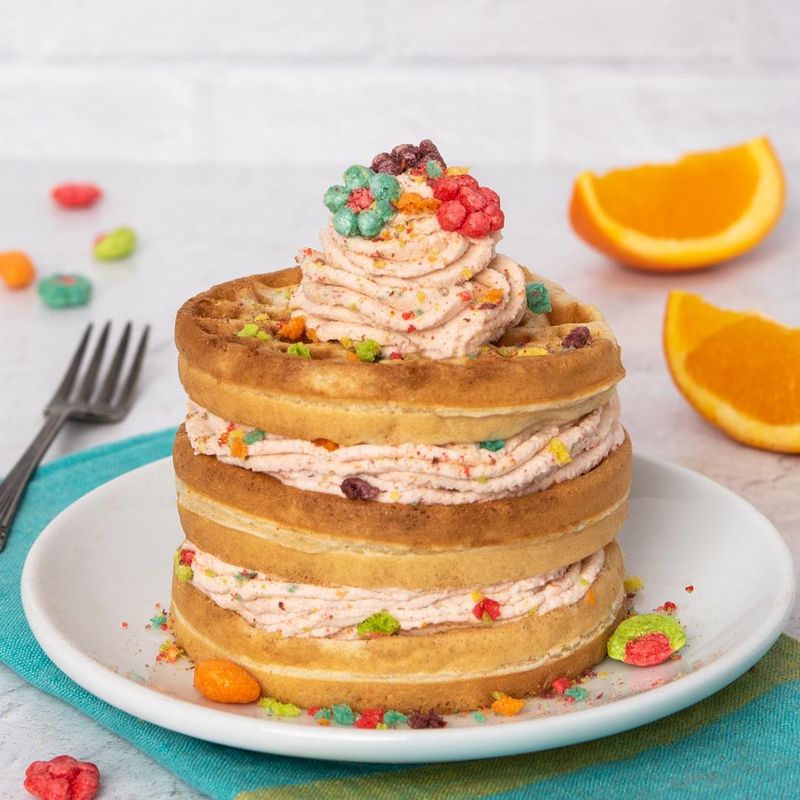
Using cereals as cake decorations can bring a fun and unexpected twist. Choose cereals that offer a variety of colors and textures. Apply them to the sides or the top of the cake using icing as an adhesive. The cereals’ crunchiness adds texture, while their colors contribute a playful aesthetic. This method is excellent for children’s occasions. It’s an effortless way to introduce different flavors and a playful element to your cake, breaking away from traditional decorations.
5. Textured Buttercream
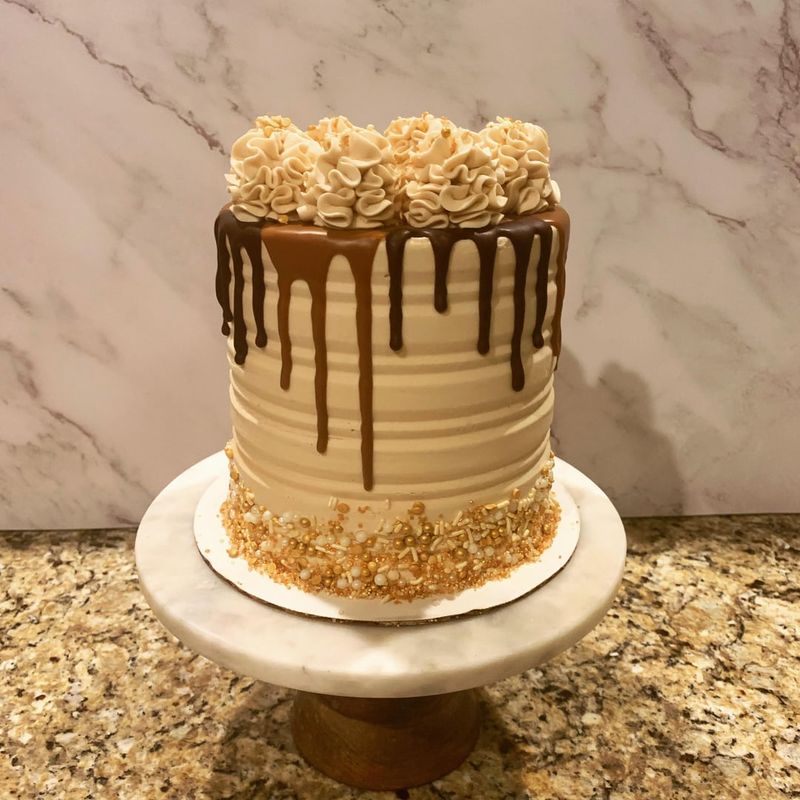
Textured buttercream adds an interesting visual effect and is simple to achieve. Use a combing tool or a fork to adds patterns in the buttercream icing. Depending on the tool’s design, you can make waves, stripes, or other textures. This method adds depth and intrigue to your cake’s presentation. Choose different colors for the buttercream to match the event’s theme. Texturing is versatile; it can be subtle or more pronounced, depending on the desired effect. This technique emphasizes the cake’s surface and enhances its overall appearance.
6. Fruit Carvings
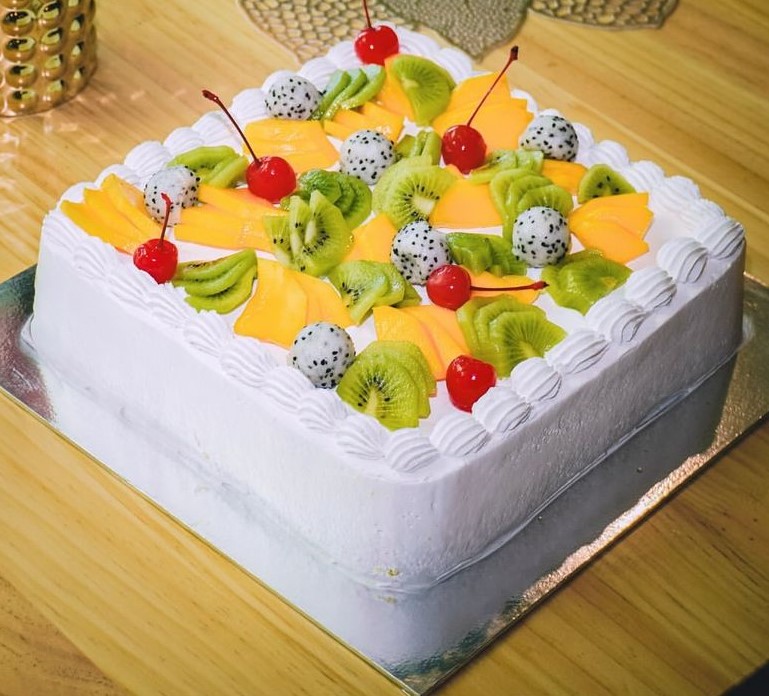
Carved fruits can serve as an artistic and refreshing cake decoration. Skillfully carve fruits like melons or apples into shapes such as flowers or leaves. These carvings can be strategically placed on the cake to add a natural, garden-like ambiance. The colors and fresh taste of the fruits complement the cake’s sweetness. This approach is ideal for summer gatherings, adding a fresh element to traditional cake decoration. The artistry involved in fruit carvings elevates the cake’s appearance with minimal effort.
7. Cookie Crumbles
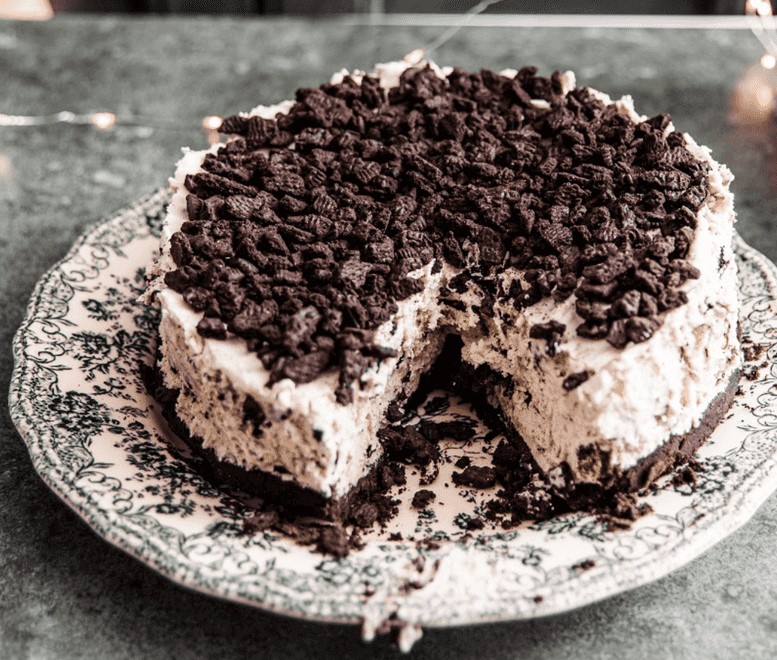
Incorporating cookie crumbles into cake decoration provides texture and flavor. Crush cookies like chocolate chip, sugar and sprinkle them over the cake. This technique is easy and adds a comforting, homemade touch. The crumbles can be distributed across the top or sides for a uniform look or focused in specific areas for contrast. Cookie crumbles offer a delightful crunch and can be tailored to suit different flavor profiles. They bring a sense of nostalgia and hominess to your cake, enhancing both taste and appearance.
8. Herbal Garnishes
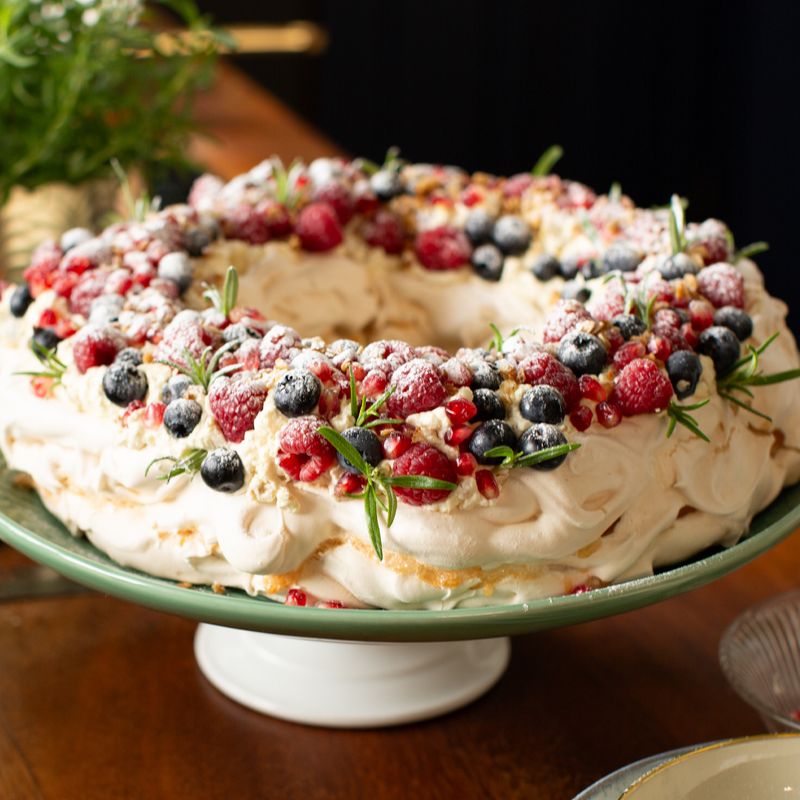
Using herbs as garnishes provides a fresh, aromatic dimension. Choose herbs like mint, rosemary, or thyme that are edible and aromatic. Arrange them aesthetically around the cake’s edges or on top. This method is ideal for adding greenery and a fresh scent, enhancing the cake’s allure. Herbal garnishes complement desserts with herbal or citrus flavors. They offer a simple yet sophisticated touch, making them suitable for casual and formal occasions. The fresh aroma and natural appearance of herbs make them a versatile decoration choice.
9. Nut Clusters
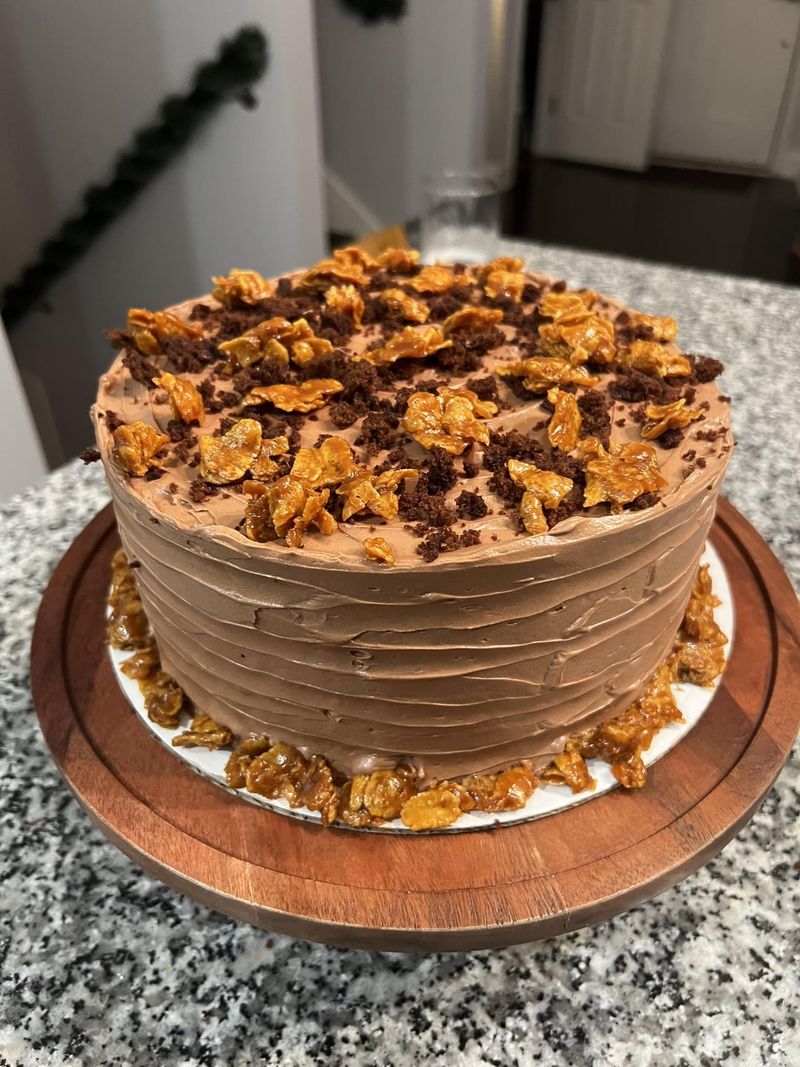
Nut clusters add a crunchy and flavorful element to cakes. Combine nuts like almonds, walnuts, and pecans; coat them lightly in honey and allow them to cluster. Place these clusters decoratively on the cake. Nuts provide a satisfying crunch and a rich, earthy taste that balances the cake’s sweetness. This decoration is ideal for autumn events or rustic-themed gatherings. The glossy finish from honey adds visual appeal, while the clusters introduce texture and a hint of natural sweetness, complementing the cake’s flavors.
10. Colorful Sprinkles
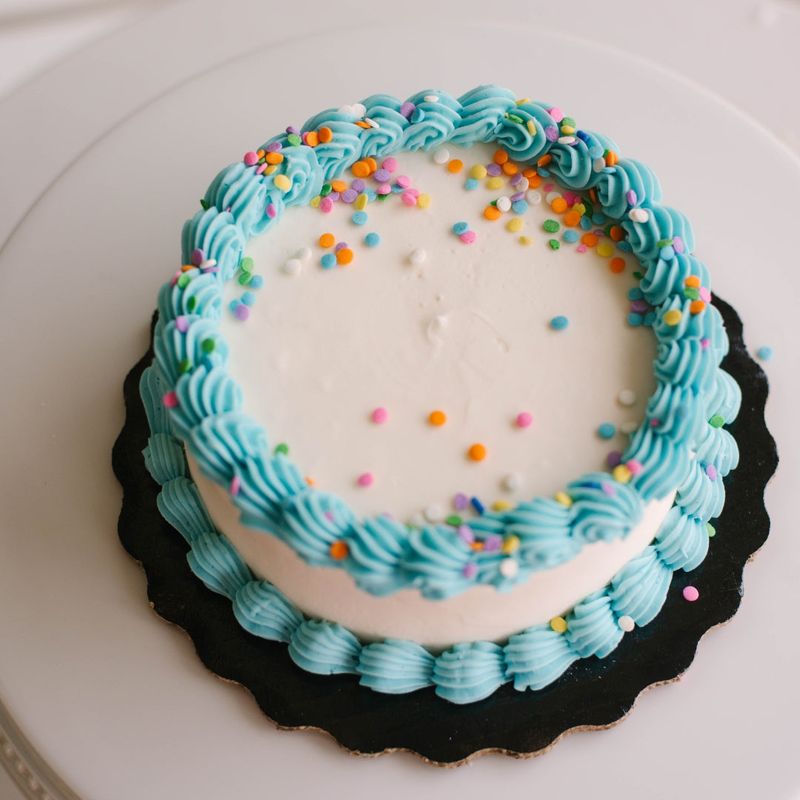
Colorful sprinkles are a classic way to decorate cakes. They provide a nice look with minimal effort. Simply spread them over the cake’s surface, pressing lightly to ensure they adhere. Sprinkles come in various shapes and colors, allowing for customization to match any theme. They are popular for occasions. Sprinkles add a fun and lively touch, making the cake stand out. The ease of use and appearance make them a favorite among bakers looking to add a joyful element to their cakes.
11. Dripped Ganache
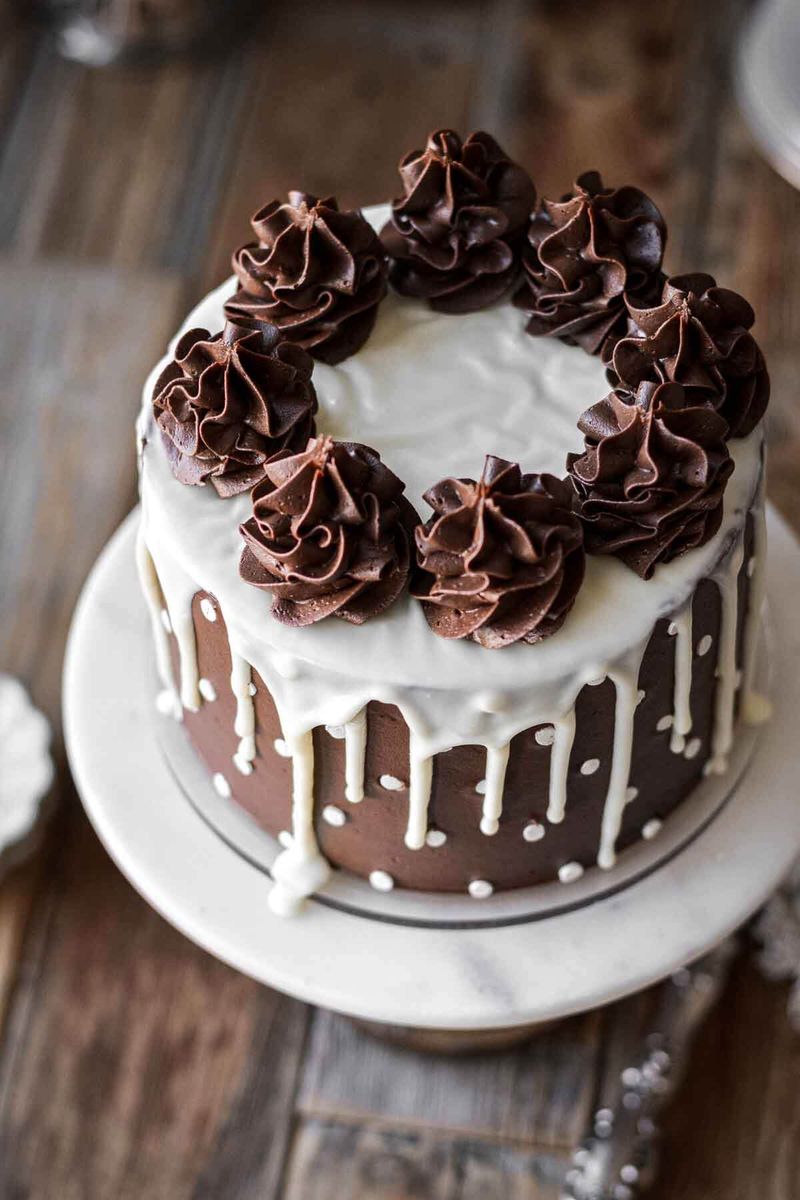
Dripping ganache is an eye-catching and decadent way to finish a cake. The key is achieving the suitable consistency, not too thick, not too runny. Warm the ganache slightly and pour it over a chilled cake. Watch as it cascades elegantly down the sides, making a dramatic and indulgent look. This technique pairs well with simple cakes, allowing the ganache to be the star. Customize the look with white, milk, or dark chocolate, and add toppings like berries or nuts for extra flair. Ganache drips are both delicious and visually appealing, making your cake a showstopper.
12. Airbrush Techniques
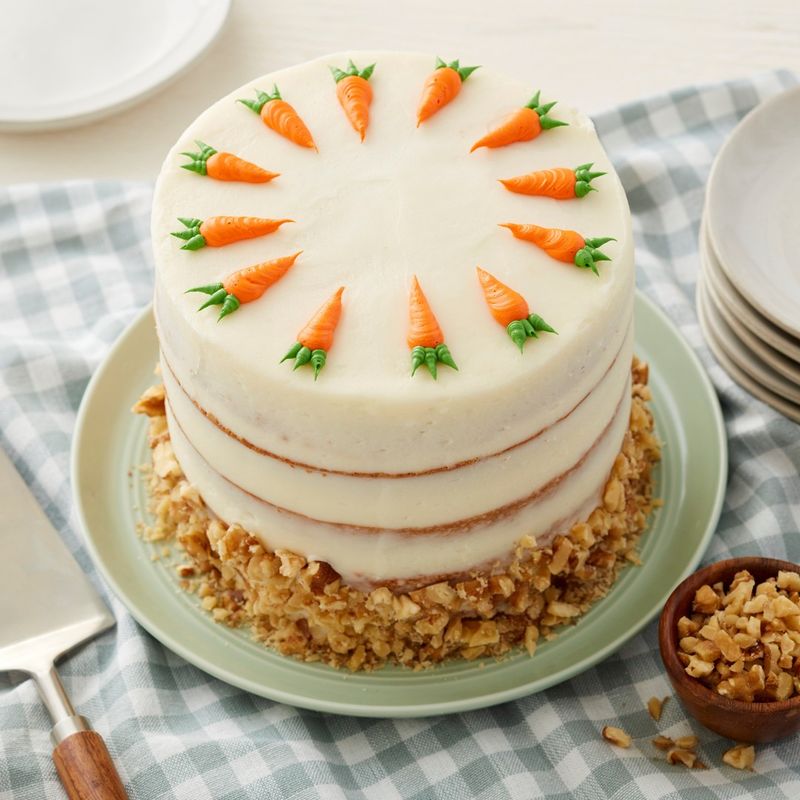
Airbrushing opens up possibilities for cake decorators. This technique allows you to blend colors and add stunning effects like ombre or intricate patterns. Equip yourself with an airbrush machine and edible colors. Practice on a flat surface before applying to your cake to ensure even color distribution and control. It’s a skill worth mastering, as it brings a professional touch to your cakes. From subtle shading to bold color statements, airbrushing can enhance your cake’s appearance dramatically. This tool is a must-have for anyone serious about cake decorating.
13. Geometric Patterns
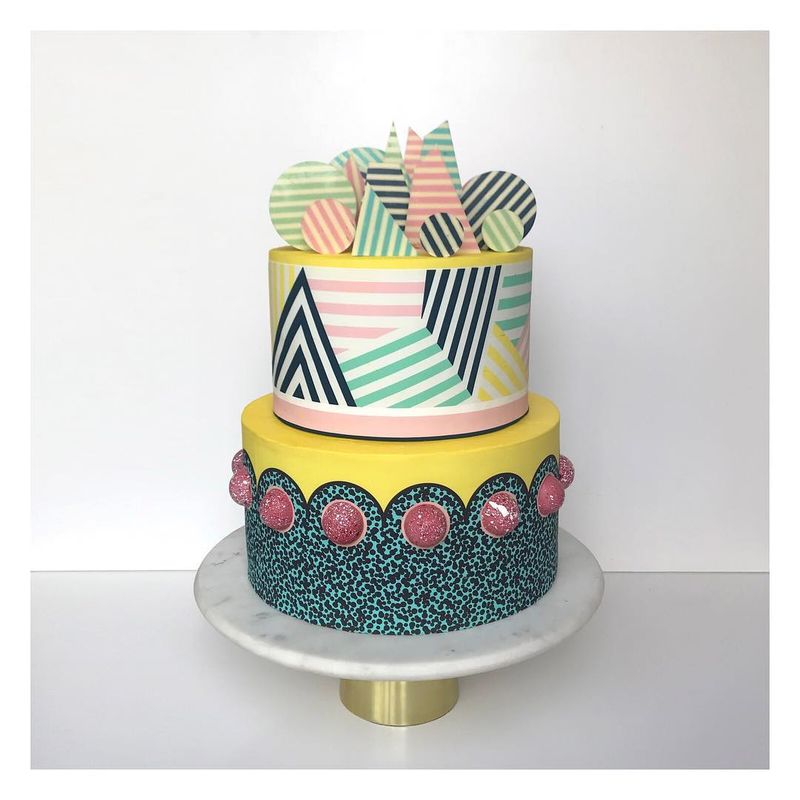
Geometric patterns offer a modern twist on cake decoration. Use fondant to cut shapes like triangles, squares, or hexagons. Arrange these on the cake to add a stylish, contemporary design. Fondant’s smooth texture allows for clean lines and precise shapes, making it ideal for achieving a professional look. This method is suitable for modern-themed events or for those desiring a sleek, artistic presentation. Geometric patterns offer a structured aesthetic, adding visual interest without overwhelming the cake’s overall design.
14. Powdered Sugar Designs
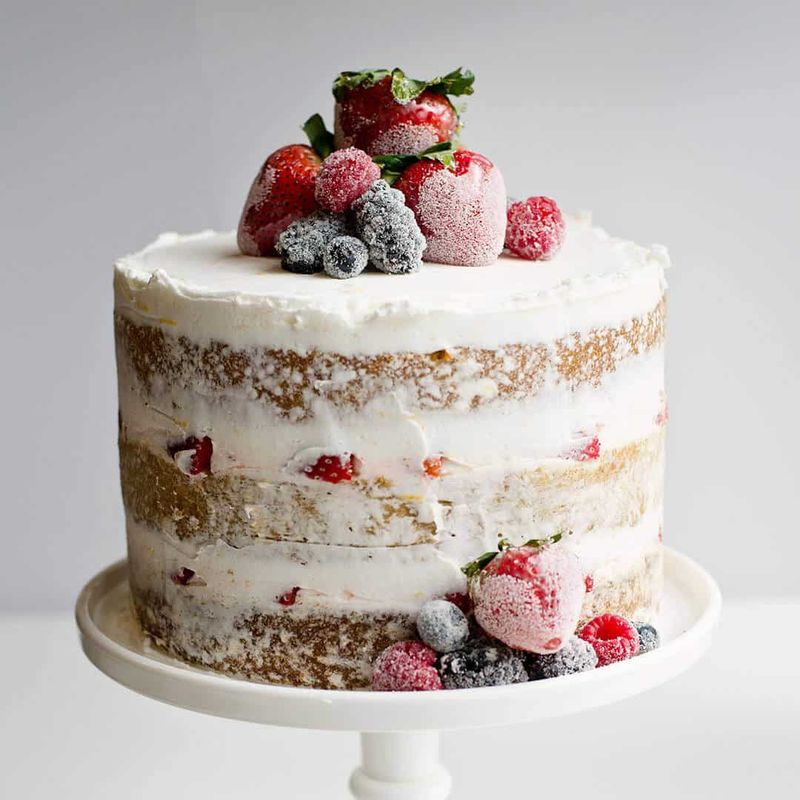
Powdered sugar designs add a subtle and elegant touch to cakes. Use stencils to dust powdered sugar onto the cake’s surface, making intricate patterns. This approach is simple yet effective, offering a refined look suitable for any occasion. The patterns can range from floral to abstract, depending on the stencil used. Powdered sugar designs are suitable for those seeking a classic and understated decoration. The delicate appearance of the sugar adds a touch of sophistication, enhancing the cake’s visual appeal without overshadowing its flavors.
15. Savory Elements
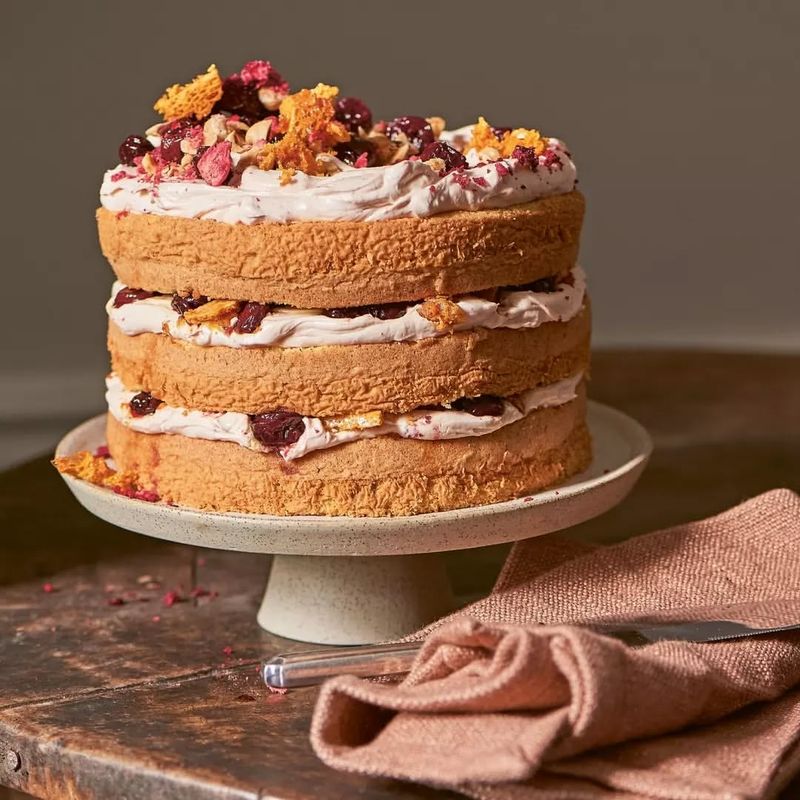
Incorporating savory elements offers a surprising twist to cake decoration. Use toppings like olives, sun-dried tomatoes, and herbs to add a savory contrast to the cake’s sweetness. This method is ideal for adventurous eaters or events where unusual flavors are welcomed. The combination of savory and sweet can add a complex and intriguing taste experience. Arrange the savory elements aesthetically, ensuring they complement rather than overpower the cake. This approach encourages designs and exploration of flavor combinations, making it a nice for cakes decoration.
